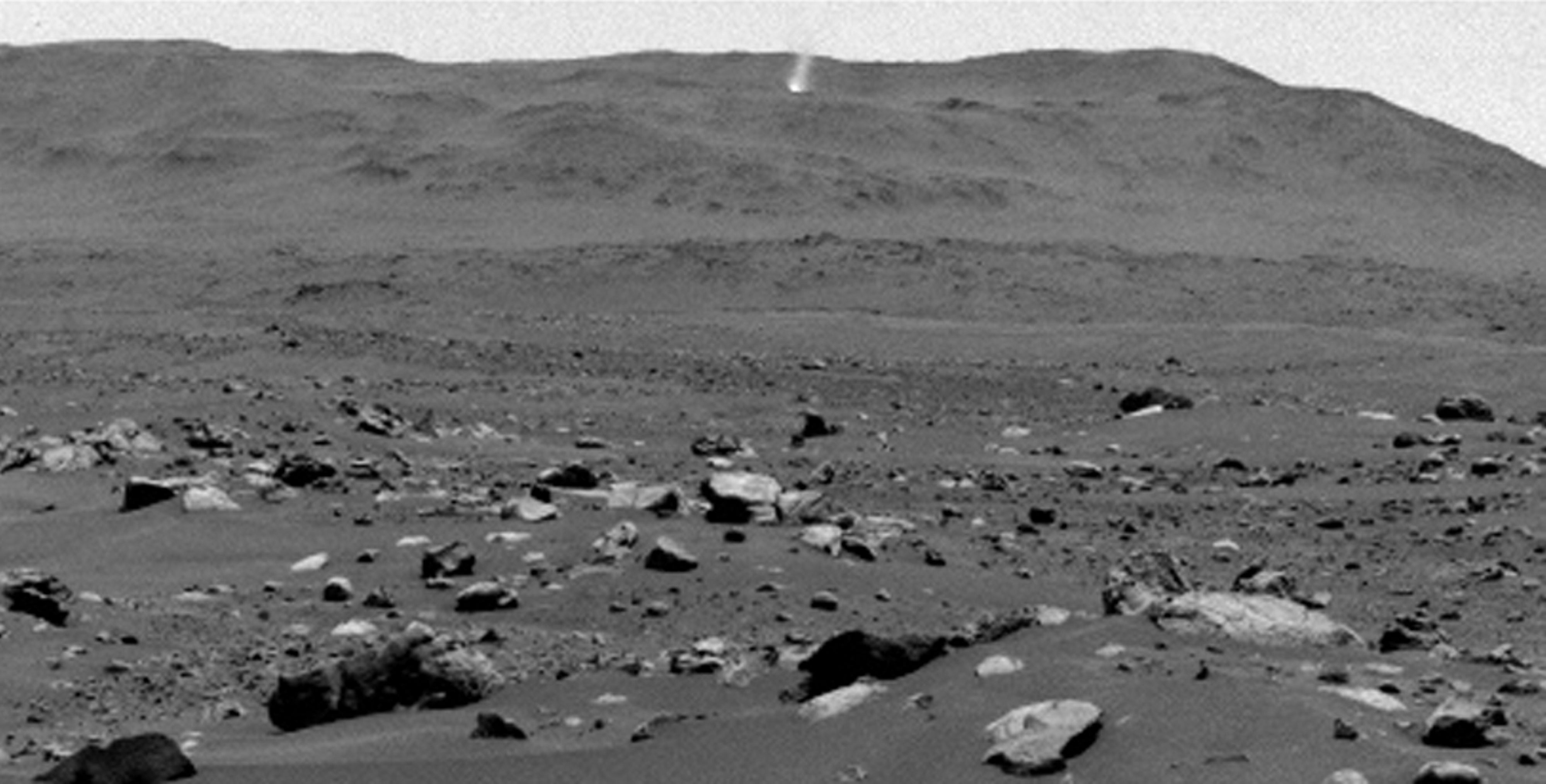Rover captures one-mile-high whirlwind on Mars
Such whirlwinds - or dust devils - form when rising cells of warm air mix with descending columns of cooler air
Your support helps us to tell the story
From reproductive rights to climate change to Big Tech, The Independent is on the ground when the story is developing. Whether it's investigating the financials of Elon Musk's pro-Trump PAC or producing our latest documentary, 'The A Word', which shines a light on the American women fighting for reproductive rights, we know how important it is to parse out the facts from the messaging.
At such a critical moment in US history, we need reporters on the ground. Your donation allows us to keep sending journalists to speak to both sides of the story.
The Independent is trusted by Americans across the entire political spectrum. And unlike many other quality news outlets, we choose not to lock Americans out of our reporting and analysis with paywalls. We believe quality journalism should be available to everyone, paid for by those who can afford it.
Your support makes all the difference.Scientists have spotted a 1.2-mile-high dust devil on Mars.
The whirlwind was observed by NASA’s Perseverance rover moving across the Martian landscape.
The six-wheeled geologist robot documented the lower portion of the dust devil as part of an atmospheric exploration of Jezero Crater.
It was seen moving east to west at about 12 mph along Thorofare Ridge on August 30.
“Much weaker and generally smaller than Earth’s tornadoes, dust devils are one of the mechanisms that move and redistribute dust around Mars,” explained NASA’s Jet Propulsion Laboratory (JPL), a robotic space exploration research and development centre in California.
“Scientists study them to better understand the Martian atmosphere and improve their weather models.”
Using data from the imagery, mission researchers determined that this particular dust devil was about four kilometres (2.5 miles) away.
They calculated its width to be about 60 metres (200 ft). While only the bottom 118 metres (387 feet) of the swirling vortex are visible in the camera frame, the scientists could also estimate its full height.
“We don’t see the top of the dust devil, but the shadow it throws gives us a good indication of its height,” said Mark Lemmon, a planetary scientist at the Space Science Institute in Boulder, Colorado, and a member of the Perseverance science team.
“Most are vertical columns. If this dust devil were configured that way, its shadow would indicate it is about 1.2 miles (2 kilometres) in height.”

Dust devils, which also occur on Earth, form when rising cells of warm air mix with descending columns of cooler air.
JPL added: “The Martian versions can grow to be much larger than those found on Earth. While they are most prominent during the spring and summer months (Mars’ northern hemisphere, where Perseverance is located, is currently in summer), scientists can’t predict when they’ll appear at a specific location.
“So Perseverance and its fellow NASA Mars rover Curiosity routinely monitor in all directions for them, taking images in black-and-white to reduce the amount of data sent to Earth.”




Join our commenting forum
Join thought-provoking conversations, follow other Independent readers and see their replies
Comments